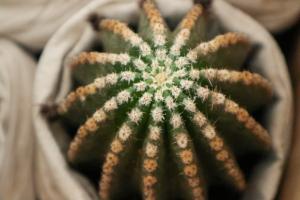Introduction
Indoor gardening has gained immense popularity in the recent years. People are now growing plants indoors for various reasons, including to ensure consumption of pesticide-free produce and adding greenery to their homes. Among the many plants grown indoors, tomato plants are some of the most widely grown ones. However, indoor tomato plants need to be pollinated manually, as there are no natural pollinators such as bees or butterflies indoors. In this article, we will discuss how to pollinate indoor tomato plants.
Understanding Indoor Tomato Plants Pollination
Tomato plants need proper pollination for them to produce fruit. Pollination in tomato plants is a process where the pollen grains from the male part of the flower (stamen) come in contact with the female part (stigma), either via wind or insects. Once the pollen has been transferred to the stigma, fertilization occurs, leading to the development of the fruit.
Manual Pollination of Indoor Tomato Plants
Manual pollination is necessary for indoor tomato plants since there are no natural pollinators in the confined environment. If you’re planning to grow tomatoes indoors, then you’ll have to take over the role of the bees and manually pollinate the plants.
Manual pollination involves the use of a small brush or your finger to transfer the pollen from the stamen to the stigma. You can use a small brush to collect pollen from one tomato plant’s stamen and then transfer it to the stigma of another tomato plant’s flower. Ensure that you use a different brush or wash the brush between pollination of each plant to avoid contamination.
To pollinate the flower with your finger, gently touch the anthers of the stamen (the long, slender, cylindrical structures that have the pollen) and then touch the stigma (the small bump at the center of the flower). Do this several times to ensure enough pollen has been transferred.
Best Time to Pollinate Indoor Tomato Plants
Tomato plants require pollination during their flowering stage, which is usually between four to six weeks after transplantation. The flowers usually appear in clusters and will continue to develop over several weeks. This stage offers the best time to pollinate your indoor tomato plants.
You should monitor the growth of your tomato plants and ensure that you don’t miss the flowering stage. Missing this stage may result in fewer fruits or no fruits at all, even if the plants vegetative growth is sufficient.
Conclusion
Indoor gardening offers numerous benefits, including fresh, pesticide-free produce and an aesthetic look to your home. However, it comes with unique challenges such as the absence of natural pollinators, requiring you to take the role of the bees in pollinating your plants. Pollinating indoor tomato plants requires manual intervention, either through the use of a small brush or your fingers. When the plants are in their flowering phase, ensure that you don’t miss the pollination stage. With the above tips, pollinating your Indoor tomato plants should be an easy task that will result in a bountiful harvest.

 how many times do yo...
how many times do yo... how many planted tre...
how many planted tre... how many pine trees ...
how many pine trees ... how many pecan trees...
how many pecan trees... how many plants comp...
how many plants comp... how many plants can ...
how many plants can ... how many plants and ...
how many plants and ... how many pepper plan...
how many pepper plan...































